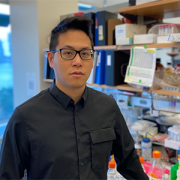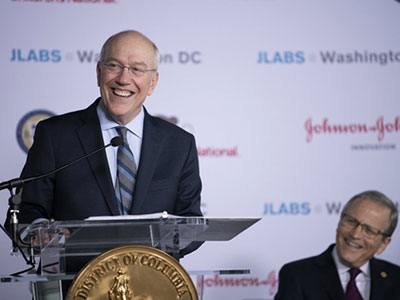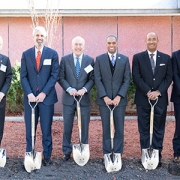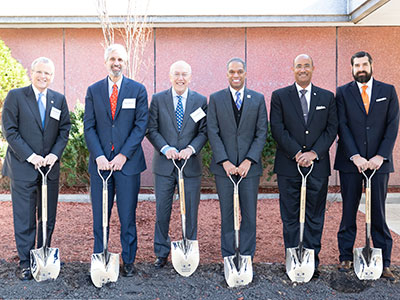Virginia Tech announces cancer biologist to launch lab at Children’s National Research & Innovation Campus
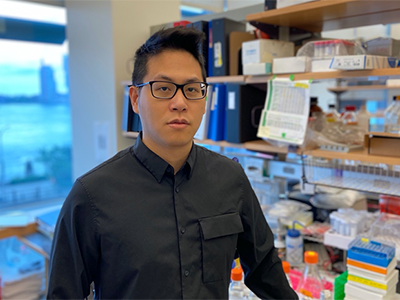
Jia-Ray Yu, Ph.D., will be an assistant professor at Virginia Tech’s Fralin Biomedical Research Institute at Virginia Tech Carilion and in the Department of Biomedical Sciences and Pathobiology in the Virginia-Maryland College of Veterinary Medicine, as well as an adjunct assistant professor at Children’s National Hospital starting Sept. 1.
Every year, 790 Americans are diagnosed with a rare and deadly form of brain cancer called a diffuse midline glioma, according to the National Cancer Institute. Tragically, only 2% of children with this disease will survive five years.
Jia-Ray Yu, Ph.D., a new assistant professor joining the Fralin Biomedical Research Institute at Virginia Tech Carilion and the Department of Biomedical Sciences and Pathobiology on Sept. 1, studies these fast-growing, treatment-resistant brain tumors, which commonly affect children, with hopes of identifying new therapeutic approaches. Yu will be the first of several cancer researchers to work in Virginia Tech’s brand-new research facility on the Children’s National Research & Innovation Campus in Washington, D.C.
“This disease is fatal and there is no cure. Any hint at a potential therapeutic pathway could be helpful,” said Yu, who will also hold an adjunct faculty position in the Children’s National Hospital Center for Cancer and Immunology Research.
Michael Friedlander, Virginia Tech’s vice president for health sciences and technology, and executive director of the Fralin Biomedical Research Institute, led Yu’s recruitment.
“Jia-Ray Yu is one of the rising leaders in understanding the molecular substrates of aggressive forms of pediatric brain cancer that can contribute to the identification of innovative therapeutic approaches. Moreover, his fundamental research into chromatin remodeling is at the very forefront of this area of emerging area importance in molecular biology,” Friedlander said. “We are very fortunate to have been able to attract Dr. Yu to Virginia Tech as we grow our greater cancer research community and our partnership with one of the nation’s pre-eminent children’s health care delivery and research systems, Children’s National Hospital.”
Yu studies how genes change when an ordinary brain cell develops malignant traits.
In particular, he examines changes in proteins called histones that spool strands of DNA molecules into a substance called chromatin, which forms chromosomes. In addition to packing genetic material into cells, these structures also play a key role in telling genes when to turn on or off.
Faulty histone proteins alter the chromatin’s structure, which in turn garbles the genetic instructions that regulate a cell’s behavior, growth rate, and identity. Furthermore, when this defective cell divides, its two daughter cells inherit the original cell’s chromatin, the malignant traits are passed on, and the cancer grows.
“These epigenetic features of chromatin are distinct from the DNA itself, yet they are inherited during cellular division,” said Yu.
Yu said 80% of tumors from diffuse midline gliomas begin with one cell that has a histone gene defect. He found when this tiny piece of a specific histone, called H3K27, stops working properly, it creates a series of domino-like reactions that cause normal cells to become cancerous.
Yu recently examined this molecular cascade as a postdoctoral fellow in the lab of Danny Reinberg, Terry and Mel Karmazin Professor in the NYU Grossman School of Medicine Department of Biochemistry and Molecular Pharmacology, and senior Howard Hughes Medical Institute Investigator.
The research team identified two genes, NSD1 and NSD2, appear to be the molecular fingers that tap the histone domino. When these genes are disabled, diffuse midline gliomas stop growing in a cultured lab dish, and in animal models. They also identified signaling pathways that could be targets for new drug therapies. Their findings are available in pre-print and will be published this summer in Science Advances.
Yu’s laboratory at the new Children’s National Research & Innovation Campus in Washington, D.C., will build on this fundamental question: How can chromatin-associated molecules be targeted to stop aggressive cancers?
Yu says that as he studies the molecular genesis of diffuse midline glioma, he may also identify therapeutic approaches for other diseases, such as leukemia and Sotos syndrome, that involve mutations in these chromatin-associated molecules.
His research team will combine biochemistry, single-molecule imaging, next-generation sequencing, biophysics, and preclinical research to develop and test new pharmaceutical alternatives to chemotherapy and radiation.
Yu was awarded a three-year American Cancer Society Postdoctoral Fellowship while working in Reinberg’s laboratory.
He completed a bachelor’s degree in biological science and technology at National Chiao Tung University in Taiwan, and his doctoral degree in genetics at Stony Brook University and Cold Spring Harbor Laboratory, where he studied signaling pathways in lung adenocarcinoma metastasis.
Recruitment for research positions in the Yu lab begins this summer.


